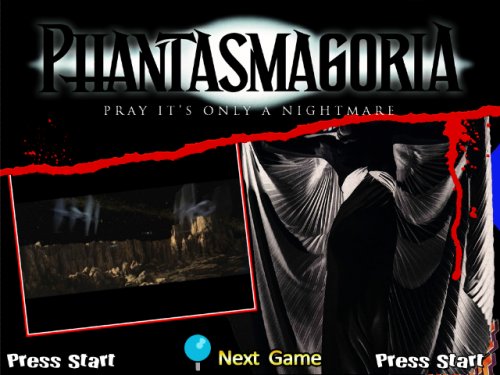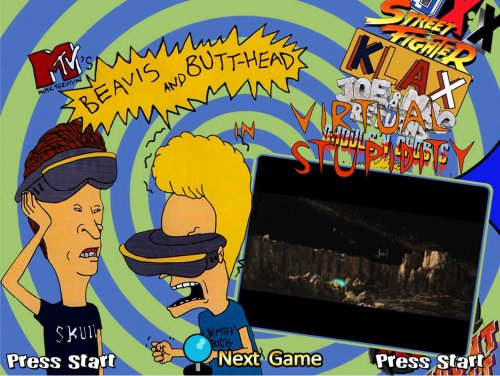Special Thanks to @wesfranks for providing the background. he's a great fart knocker~!
Beavis and Butt-Head in Virtual Stupidity is a point and click adventure computer game based on the American animated television series created by Mike Judge, Beavis and Butt-Head, that was developed by ICOM Simulations and published by Viacom New Media. It was released on August 31, 1995.[1]
It featured vocals from the series' cast of voice actors, including Mike Judge.[2] Besides the main game, four mini-games are featured, called Hock-A-Loogie, Court Chaos, Bug Justice, and Air Guitar.
The main game plots the two main characters, Beavis and Butt-head, trying to get into Todd's gang. Over the course of the game, they have to complete tasks[3] and explore areas in the fictional town of Highland, Texas.
It was originally released on the PC. A CD-i port of Virtual Stupidity was planned but was cancelled due to falling sales of the console. A PlayStation port was made, but was only released in Japan.

Phantasmagoria is a point-and-click adventure game designed by Roberta Williams for MS-DOS and Microsoft Windows. Released by Sierra On-Line on August 24, 1995, it tells the story of Adrienne Delaney (Victoria Morsell), a writer who moves into a remote mansion and finds herself terrorized by supernatural forces. Made at the peak of popularity for interactive movie games, Phantasmagoria features live-action actors and footage, both during cinematic scenes and within the three-dimensional rendered environments of the game itself. Upon release, it was noted for its graphic gore, violence, and sexual content.
Williams had long planned to design a horror game, but waited eight years for software technology to improve before doing so. More than 200 people were involved in the making of Phantasmagoria, which was based on Williams' 550-page script, about four times the length of an average Hollywood screenplay. It took more than two years to develop and four months to film. Originally budgeted for US$800,000, the game ultimately cost $4.5 million to develop, and it was filmed in a $1.5 million studio Sierra built specifically for the game.
Directed by Peter Maris, the game features a cast of 25 actors, all performing in front of a blue screen. While most games at the time featured 80 to 100 backgrounds, Phantasmagoria includes more than 1,000. A professional Hollywood special effects house worked on the game, and the musical score includes a neo-Gregorian chant performed by a 135-voice choir. Sierra stressed it was intended for adult audiences. The company willingly submitted it to a ratings system, and included a password-protected censoring option within the game to tone down the graphic content.
Released on seven discs after multiple delays, Phantasmagoria was a financial success, grossing $12 million in its opening weekend and becoming one of the best-selling games of 1995. Sierra strongly promoted the game. It received mixed to positive reviews, earning praise for its graphics and suspenseful tone, but was criticized for its slow pacing and easy puzzles. The game drew controversy, particularly due to a rape scene. CompUSA and other retailers declined to carry it, religious organizations and politicians condemned it, and it was banned altogether in Australia. A sequel, Phantasmagoria: A Puzzle of Flesh, was released in 1996, although Williams was not involved.


